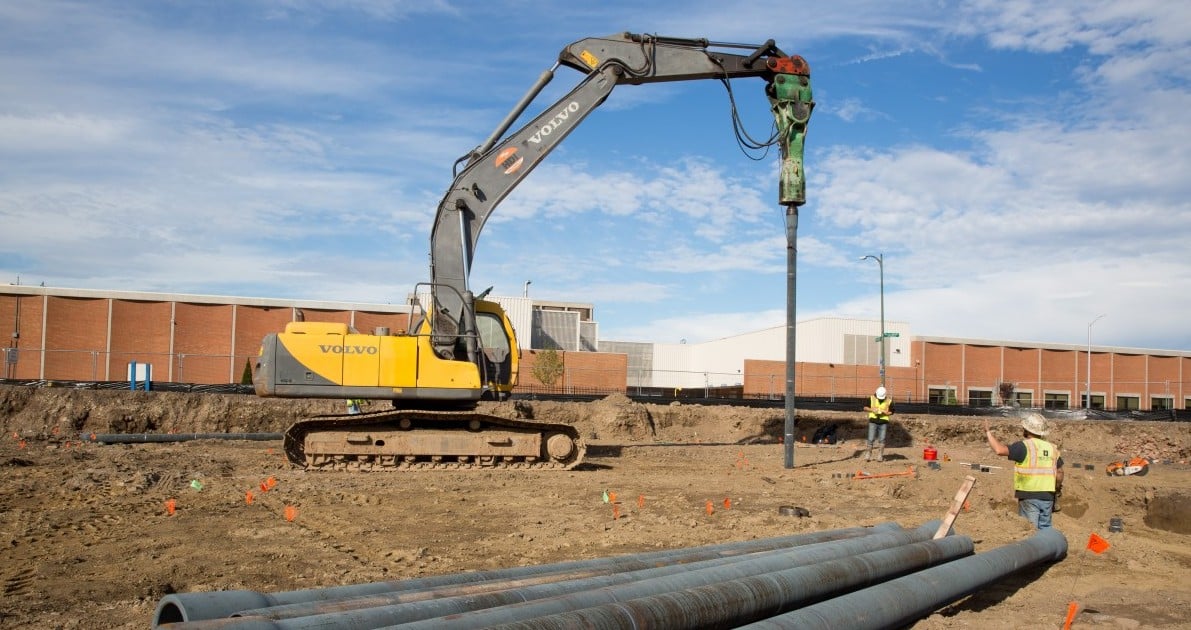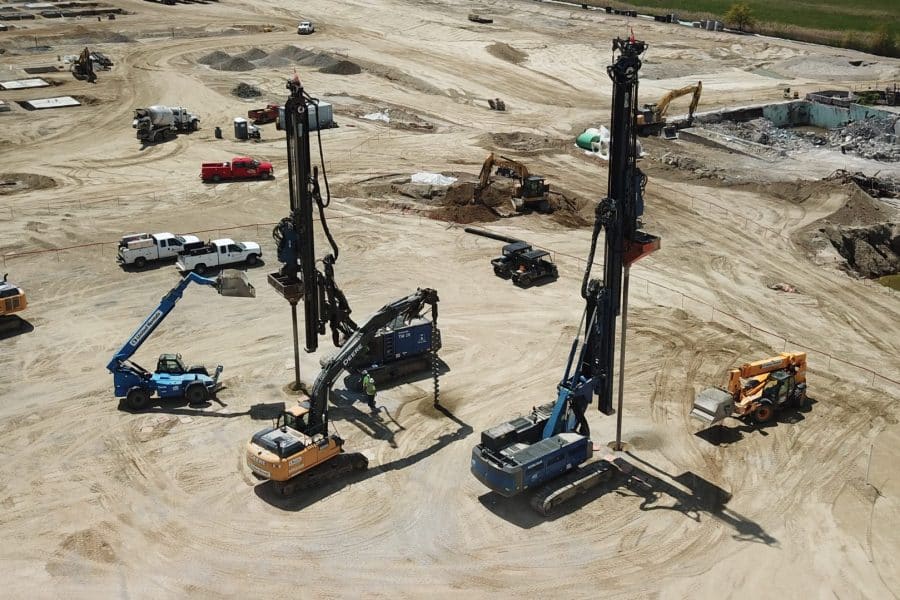Published in Pile Buck Magazine – Jan/Feb 2016 Issue
Hartford, CT is the home of the new double-A minor league baseball team — the Hartford Yard Goats. The introduction of a new team is spurring substantial development including a new Downtown North Hartford Baseball Stadium and various projects around the site. One of these projects includes the new 8-story, 53,400 square foot Candlewood Suites hotel to house many of the out-of-town guests catching a game. Foundation loads for the steel-framed structure range from 400 to 800 kips with areas of isolated tension demand on braced frame footings.
Steel H-piles, like many areas of the country, are still a commonly-used foundation system. Initial recommendations and design for the project were no different and utilized traditional 100 ton driven H-piles consisting of either HP 12×74 or HP 14×73 sections to support the building loads. However, Ductile Iron Piles (DIPs) proved to be more cost-effective and better for the schedule.
Subsurface conditions at the site included up to 8 feet of variable, debris fill underlain by soft to stiff silt and sandy silt to a depth of about 22 feet. A medium dense to dense sand layer was encountered below the silt until shale bedrock was encountered at depths of 25 to 32 feet below grade. Groundwater was about 15 feet below grade. The fill and soft silt posed an expensive challenge for the project team. With the shallow foundation option resulting in excessive total and differential settlement, engineers turned to deep foundations to meet the performance needs.
After reviewing the project plans and discussing with the design team and General Contractor, PM Construction of Saco, Maine, Helical Drilling proposed a value engineered alternative utilizing Ductile Iron Piles as a replacement to the specified H-piles. The driven Ductile Iron Piles solution provided a 1:1 replacement with the 100 ton allowable capacity piles. The advantages of the Ductile Iron Piles included: reduced cost, rapid installation, lower vibrations during installation, easily adapting to variations in subsurface conditions and lengths and improved safety with less overhead activity.


